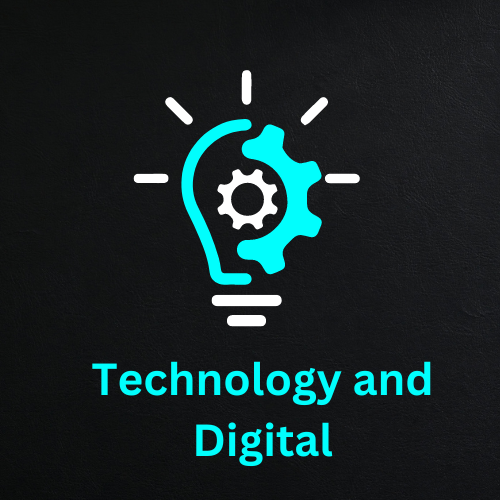The Art of Tomorrow, Written in Code

Technology is not merely a tool — it is the poetry of progress, written in circuits and light. In 2025, it has become the silent architect of human dreams, reshaping how people connect, learn, and live. Every heartbeat of innovation tells a story — one of resilience, curiosity, and hope. From artificial intelligence to sustainable energy, the future is no longer distant. It lives in every screen, every algorithm, and every human decision that seeks to make life simpler, brighter, and more meaningful.
🌐 Artificial Intelligence: The Mind That Learns, The Soul That Adapts
Artificial Intelligence has crossed the borders of imagination. In 2025, it is not just about robots or automation; it is about intuition. AI now learns from emotion, not only data. It predicts what users might need before they even ask. Virtual assistants have evolved into digital companions capable of understanding tone, context, and sentiment.
In healthcare, AI reads patterns invisible to human eyes, detecting diseases in early stages. In education, it personalizes lessons so that every student learns at their own rhythm. In art and creativity, AI becomes a collaborator — turning text into melodies, sketches into films, and imagination into tangible beauty.
Practical Tip: Start small. Try integrating AI into daily life through smart scheduling, automated writing aids, or data insights. Let technology handle the routine, so human minds can focus on creation.
Still, behind every line of code lies an ethical challenge. How can intelligence be used responsibly? Transparency, fairness, and accountability define the new frontier. In this balance of logic and morality lies the true art of innovation.
📱 The Internet of Things: When Everyday Objects Begin to Think
In 2025, homes breathe. They wake with their inhabitants, adjust light to mood, and play music to match emotion. Refrigerators remind users of expiring food, cars converse with roads, and wearables whisper health insights in real time. This interconnected web — the Internet of Things (IoT) — has turned convenience into companionship.
Imagine stepping into a home that recognizes the rhythm of footsteps, adjusting warmth and color to soothe the senses. Such is the quiet magic of modern technology — invisible, yet deeply human.
Practical Tip: Begin by automating one aspect of life, such as lighting or energy management. Gradual integration creates balance and prevents technological fatigue.
Yet, this convenience comes with responsibility. As more devices collect personal data, cybersecurity and privacy become sacred priorities. Trust must be woven into every connection, ensuring technology remains a servant, not a master.
⚡ Sustainable Technology: Innovation with a Conscience
The heart of 2025 beats green. Technology has finally found its harmony with nature. Solar panels shimmer on rooftops, wind farms dance across the horizon, and electric vehicles glide silently through city streets. Sustainability is no longer a distant goal — it is a shared responsibility and a thriving industry.
Tech companies are reimagining production with biodegradable materials, recyclable components, and carbon-neutral processes. Smart grids optimize energy consumption, while AI-driven analytics monitor emissions in real time. Even digital data centers — once major contributors to pollution — are now powered by renewable energy.
Practical Tip: Choose sustainable devices that are energy-efficient and built to last. Small decisions — like switching to green hosting or solar charging — contribute to larger environmental change.
Technology, when guided by conscience, becomes a healer of the planet — a reminder that progress and preservation can walk hand in hand.
🕶️ Extended Reality: Blurring the Boundaries Between Real and Digital
Reality, once confined to the physical world, now expands beyond imagination. Augmented Reality (AR) and Virtual Reality (VR) have turned learning, entertainment, and collaboration into immersive adventures. Classrooms exist in virtual space; museums open portals to ancient civilizations; architects walk inside their designs before a single brick is laid.
In 2025, businesses conduct meetings across continents in shared 3D spaces. Artists sculpt with light instead of clay. Surgeons train in virtual theaters that simulate the complexity of real human anatomy. The barrier between imagination and experience has dissolved — leaving only possibility.
Practical Tip: Start exploring with free or entry-level AR/VR tools. Whether for education, gaming, or design, extended reality enhances understanding through engagement and presence.
Extended reality does not replace human connection; it enriches it. It bridges distance, amplifies empathy, and allows shared experiences across borders and time zones.
💬 The Language of Data: Insight in Every Byte
Data has become the heartbeat of modern civilization. Every click, swipe, and search leaves behind a trail of information that, when analyzed responsibly, becomes a map of collective human behavior. In 2025, predictive analytics and intelligent dashboards allow businesses, educators, and individuals to make informed choices rooted in evidence rather than guesswork.
Hospitals predict patient flow to save lives. Farmers use data-driven irrigation to conserve water. Governments use analytics to forecast public needs with unprecedented accuracy. Every byte of data tells a story — of need, behavior, and change.
Practical Tip: Use basic analytics tools to track personal or business trends. Understanding data patterns encourages smarter, more mindful decision-making.
However, data must be treated with reverence. Misused, it invades privacy; used wisely, it empowers progress. The difference lies in intention — the invisible thread that binds technology to humanity.
💞 Human-Centered Innovation: Where Heart Meets Hardware
Behind every technological revolution lies a simple truth — technology exists to serve humanity. The devices, algorithms, and systems of 2025 are designed with empathy at their core. From accessibility tools that empower differently-abled individuals to mental health apps that provide comfort in silence, the focus has shifted from functionality to emotional intelligence.
In workplaces, automation frees humans from monotony, allowing creativity to flourish. In education, technology personalizes knowledge rather than standardizing it. In healthcare, it extends the warmth of care through precision and speed.
Practical Tip: Choose tools that not only perform efficiently but also align with ethical and emotional values. Human-centered technology enhances both productivity and well-being.
Technology, at its best, does not replace humanity — it amplifies it. It listens, adapts, and evolves alongside the heart that created it.
🔮 The Future Is Now
Every generation imagines the future as distant — a shimmering horizon yet to arrive. But in 2025, that future has unfolded quietly, step by step, in pockets of daily life. Artificial intelligence that understands tone. Homes that breathe. Cars that think. Devices that learn from love and laughter as much as logic and data.
The story of technology is the story of human ambition — one of creation, connection, and care. The coming years will not just be defined by smarter machines but by wiser minds that use them responsibly. The most powerful innovation, after all, is not coded in silicon or steel — but in empathy, curiosity, and courage.
Call to Action: How is technology transforming your life in 2025? Share your thoughts, stories, or experiences in the comments below. Every perspective shapes the conversation — and the future.
Technology may speak in code, but its true language is human.



